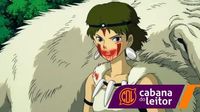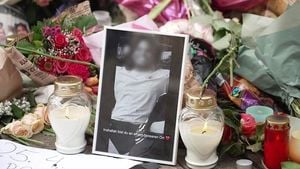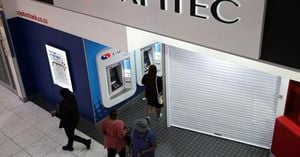As the world of animation continues to evolve, the iconic Studio Ghibli finds itself at the center of a heated debate regarding the use of artificial intelligence (AI) in creative arts. Recently, Gkids, the distributor of Studio Ghibli films in the United States, issued a statement addressing the growing trend of AI-generated art that imitates the beloved style of Hayao Miyazaki, co-founder of the studio. This statement coincided with the re-release of the film "Princess Mononoke" in theaters, highlighting the studio's commitment to preserving the integrity of hand-drawn animation.
In a time where technology increasingly attempts to replicate human creativity, Gkids expressed enthusiasm for audiences who appreciate the theatrical experience that respects and celebrates Miyazaki's artistic legacy. The statement emphasized, "In an era where technology tries to replicate humanity, we are thrilled that audiences value a theatrical experience that honors and celebrates Hayao Miyazaki and the masterpiece of Studio Ghibli in all its hand-drawn cinematic glory." This reflects a deep-rooted concern within the artistic community about the implications of AI-generated art.
The controversy surrounding AI art has gained momentum following the recent launch of OpenAI's advanced image generator, which has the capability to create visuals reminiscent of Studio Ghibli’s enchanting animations. This tool, released on March 24, 2025, boasts practical advancements, including improved text rendering and the ability to handle more complex prompts. Users of ChatGPT have begun to flood social media platforms like X (formerly Twitter) and Instagram with creations that mimic Ghibli's distinctive style, including reimagined scenes from popular culture and political events.
For instance, some users have recreated a trailer for "The Lord of the Rings: The Fellowship of the Ring" in Ghibli's style, while others have depicted iconic moments from shows like "The Sopranos" and even real-life exchanges involving political figures such as Donald Trump and Ukrainian President Volodymyr Zelensky. This trend showcases both the potential of AI to generate compelling visuals and the concerns it raises regarding copyright and artistic authenticity.
Amidst this technological surge, Hayao Miyazaki’s stance on AI-generated art has been clear and resolute. In a 2016 meeting, after witnessing a demonstration of AI animation, Miyazaki expressed his strong disapproval, stating, "I am completely disgusted. If you really want to make creepy things, go ahead and do it. I would never wish to incorporate this technology into my work." He further elaborated, saying, "I strongly feel that this is an insult to life itself." These sentiments resonate with many artists who fear that AI threatens the very essence of human creativity.
The backlash against AI art is not limited to Studio Ghibli. Recently, nearly 4,000 individuals signed an open letter urging Christie's auction house to cancel a sale dedicated exclusively to AI-generated art. This initiative stems from concerns that the programs used to create such pieces may be trained on copyrighted works, thus exploiting human artists and their creations.
OpenAI's CEO, Sam Altman, has weighed in on the situation with a touch of humor, stating that after spending a decade attempting to develop superintelligence aimed at solving major issues like cancer, it was the Studio Ghibli-related images that unexpectedly sparked viral interest in his work. He noted, "Nobody cares for the first 7.5 years, then for 2.5 years, everyone hates you for everything," highlighting the unpredictability of public interest in technological advancements.
As the debate over AI-generated art continues, the implications for copyright and the role of artists in an increasingly digital landscape remain critical points of discussion. While some embrace the capabilities of AI as a tool for creativity, others, like Miyazaki and many traditional artists, view it as a threat to the authenticity and emotional depth that hand-drawn art embodies.
In light of these developments, the animation community is at a crossroads. The rise of AI technology presents both opportunities and challenges, prompting artists, distributors, and audiences alike to reflect on what constitutes art and the value of human touch in creative expression. As Studio Ghibli and its supporters advocate for the preservation of traditional animation techniques, the conversation surrounding AI's role in art will undoubtedly continue to evolve.
In conclusion, the intersection of technology and artistry raises profound questions about the future of creativity. As AI tools become more advanced, the challenge will be to find a balance that honors the legacy of artists like Hayao Miyazaki while also embracing the possibilities of innovation. The ongoing dialogue between traditional methods and emerging technologies will shape the landscape of art for years to come.






